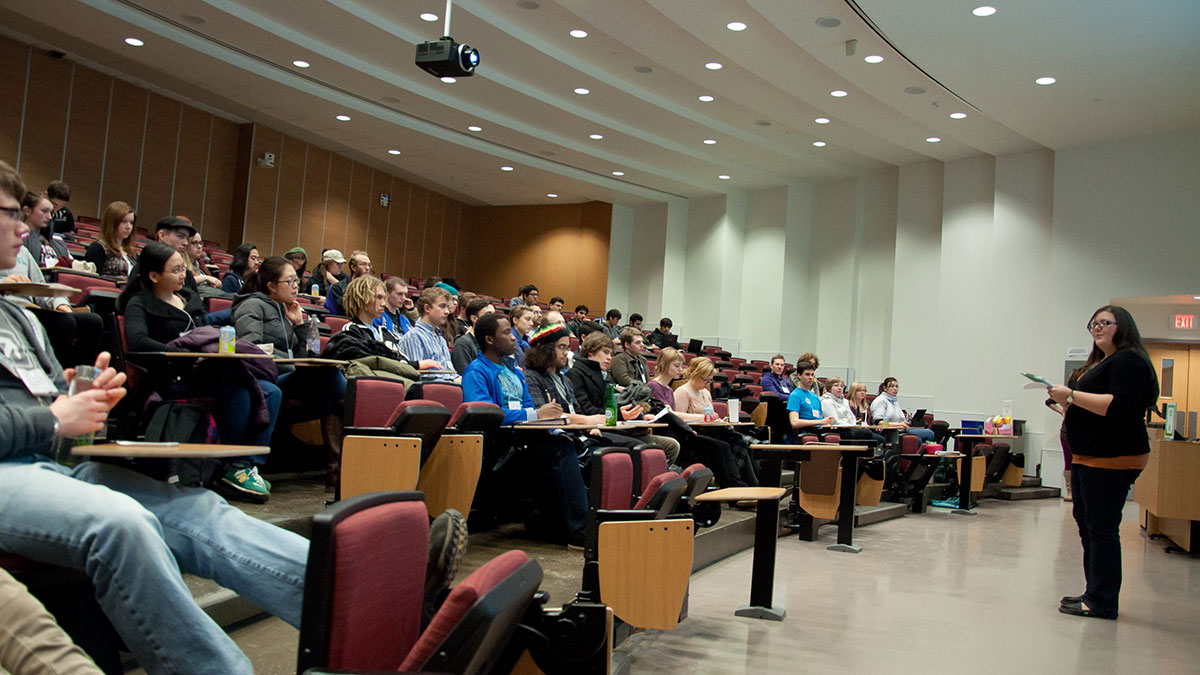 Claudine Chau
Claudine ChauThis past weekend, the University of Alberta hosted post-secondary students from all across Alberta for the sixth annual Student Sustainability Summit. This year’s theme was “Sustainable Cities & Communities: Planning for Transformational Change.” The summit explored ways in which to re-imagine cities as necessary facilitators of environmental change, and the roles in which various groups and citizens can contribute to that process.
According to Sunday’s keynote speaker, Kevin Jones, who spoke on community engagement to create sustainable urban futures: “Who we are is what we make the city to be.” The work of creating sustainable cities cannot be left to just city planners and engineers — cities are shaped by the interactions and activities of its citizens.
Jones’ talk covered a history of cities, and critiqued the common perception of cities as existing in opposition to nature or the environment. Jones demonstrated a rightfully cynical viewpoint towards the recent trend of municipal governments taking up sustainability issues, noting that while it is a step in the right direction, trends around city planning and building change frequently, and the movement towards infill likely won’t last forever. Instead, he shifted the focus to community building, and placed the responsibility on citizens to create equitable, just social spaces that they want to live in. Giving a talk about engagement to a group of students who voluntarily spent their weekend at a sustainability summit may seem like preaching to the choir, but the energy in the room at the end of the day showed that a weekend of community building had already had an impact. Before the farewell session ended, delegates shared their plans for creating sustainability within their cities, proving that by working together, ordinary citizens can and must create impactful change.
Along with two keynote speakers, the summit featured smaller, concurrent speaker sessions throughout the weekend. Presenters spoke on everything from the benefits of tiny homes in Edmonton, to creating sustainable transformation, to the necessity of achieving gender equality in the community-building process. In the facilitated evaluation on Sunday, the diversity of the optional sessions was brought up several times as one of the features that made the weekend such a success.
Other features that delegates mentioned in the evaluation as making the summit successful were the optional yoga class on Sunday morning, the delicious vegetarian and vegan food (which delegates were encouraged to pack up and take home as leftovers to avoid food waste), the drum circle at lunch on Saturday, door prizes including books from upcoming and past speakers on sustainability, and a tour of green buildings on campus. The tour showcased ECHA, where the summit was held, as well as CCIS. The tour was a chance to show what the university is doing for sustainable design, not only to delegates from other schools, but for U of A students as well.
The real heroes of the weekend were the organizers. The summit is put on every year by the Office of Sustainability, Sustain SU, and the Student Umbrella for Social Justice (SUSJ). These are the people who, along with the tour of green buildings on campus, set the U of A apart as environmental innovators and leaders among post-secondary schools in Canada, and they once again pulled off an exciting event, inspiring real change in a new generation of leaders.




